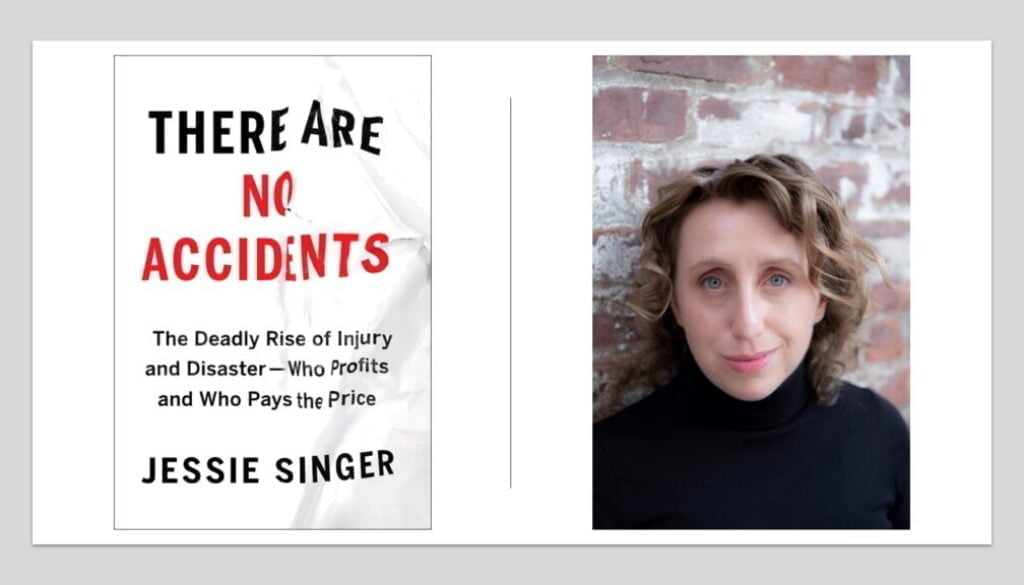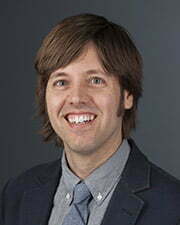There Are No Accidents: An Interview with Author Jessie Singer, Part 1
Jarron Saint Onge
We welcome Jessie Singer to the IAPHS Blog to discuss their new book, There Are No Accidents: The Deadly Rise of Injury and Disaster—Who Profits and Who Pays the Price. In this book, Singer discusses the importance and implications of the way we report, frame, and respond to accidents and accident-related deaths.
Following is Part 1 of a conversation about this timely and interesting book, where Jessie and I discuss the terminology of accidents and the implications of framing the idea of an accident. Part 2 will focus on the built environment and harm reduction. And finally, Part 3 will discuss the role of population health scientists in research, communication, and policy involved with accidents and how we can reduce their prevalence and severity. The interviews have been lightly edited and condensed for space and clarity.
What can you tell us about the basic premise of the book? What do you want IAPHS members to know?
First, I don’t usually say the word “accident.” Because everything we call an accident is predictable and preventable. But I am going to say it today so you can see when it sounds wrong to you, too.
In the book, I trace the history of the word accident in the US, and the current, catastrophic rise in accidental deaths. Accidental deaths have risen 132% since 1992 and have skyrocketed lately. So much so that in 2019, 173,000 people in the U.S. were killed in accidents — that number rose to 200,000 just a year later, in 2020. It’s important to note that this is a uniquely American problem. The rise has not been seen in other wealthy countries.
Why is the framing of the terminology around accidents so important?
What we’re talking about is what the Centers for Disease Control and Prevention alternately refer to as “accidents” and “unintentional injuries,” including a variety of deaths: traffic crashes, fires, falls, and drug overdoses, to name a few. While this is plain, in defining the accident, there’s a lot we get wrong.
There are two definitions of the word accident and these contradict one another: an accident is a random event, but it is also a harmful event. Which is to say, an accident is, by definition, unpredictably random with a predictably harmful outcome. From that very confusing starting point, we have this huge umbrella under which we group a massive amount of harms.
Worse yet, studies show, when we hear the word accident, we don’t think about either of those definitions. We focus instead on intention, which is to say, the last person involved in the accident and what they did wrong. From this perspective, unintentional injury death seems random, and we miss the layered causality, the stacked dangerous conditions, and the different risk exposures that actually lead to harm.
Accidents are, by definition, supposed to be random. If that were true, injury-related death would fall randomly across the country. Population health scientists know this is not true, especially for accidents where policy and infrastructure make a difference between life and death. It’s in these infrastructure and policy-related causes of death that we see real differences in who lives in who dies.
People of color are more likely to die by accident, as are people living in poverty. Black people die in house fires at twice the rate of white people. Indigenous people are struck and killed by drivers at twice the rate of white people. People in West Virginia die by accident at more than twice the rate of people just across the state line in Virginia, which is to say that for these people, policy decisions and infrastructure allocations lead to risk unequally distributed. While we often think of accidents as a matter of intentionality, and therefore personal responsibility, it’s actually a matter of risk exposure.
People of color are more likely to die by accident, as are people living in poverty. Black people die in house fires at twice the rate of white people. Indigenous people are struck and killed by drivers at twice the rate of white people. People in West Virginia die by accident at more than twice the rate of people just across the state line in Virginia, which is to say that for these people, policy decisions and infrastructure allocations lead to risk unequally distributed. While we often think of accidents as a matter of intentionality, and therefore personal responsibility, it’s actually a matter of risk exposure.
Can you comment on rural-urban divide in accidents?
I’m always wary of going too deep into the urban-rural divide because it appears to over-simplify the complicated causality of accidents. For example, new data just came out from the National Highway Traffic Safety Administration (NHTSA) that showed another increase in traffic fatalities, with the rise worse in urban areas. This has to do with population density and re-urbanization, but it also has to do with the fact that pedestrian fatalities have especially risen. NHTSA is failing to consider their own role in regulating vehicle size while people are buying bigger and bigger SUVs, which makes a big difference in impact severity if you’re a pedestrian in a dense city.
But, at the same time, for a traffic crash in a rural area where rural hospitals are closing, access to care is affecting the survivability of a traffic crash. Those are very different layers of risk exposure lost if we simplify these distinctions down to the rural-urban divide, and we miss the combination of policy, regulatory, and infrastructure decisions that could prevent the harm in both the urban and rural crash.
How does this desire for a simple answer affect our approach to accidents?
When we focus on accidental death, we often talk about who screwed up, who did something wrong. It’s a way to reduce the “accident” down to a simple cause – but identifying one bad or erroneous actor has nothing to do with whether or not we survive an accident. Survival has more do more with what happened before or after.
Reducing layers of causality to a simple binary — whether that’s urban or rural, or defining the driver as drunk or speeding — gets in the way of our ability to prevent accidents. If we look at the problem as simply “people in the city drive big cars,” or “rural hospitals are closing,” we miss the bigger point: what we can do about it. Each of these factors presents one of many opportunities to reduce harm in any given incident where things have gone wrong.
Join us in our next blog post, coming soon, where we continue the conversation to discuss the built environment, inequities, and the stigmas that surround accidents in America today.
There Are No Accidents: The Deadly Rise of Injury and Disaster—Who Profits and Who Pays the Price is available now through Simon and Schuster publishing.






All comments will be reviewed and posted if substantive and of general interest to IAPHS readers.